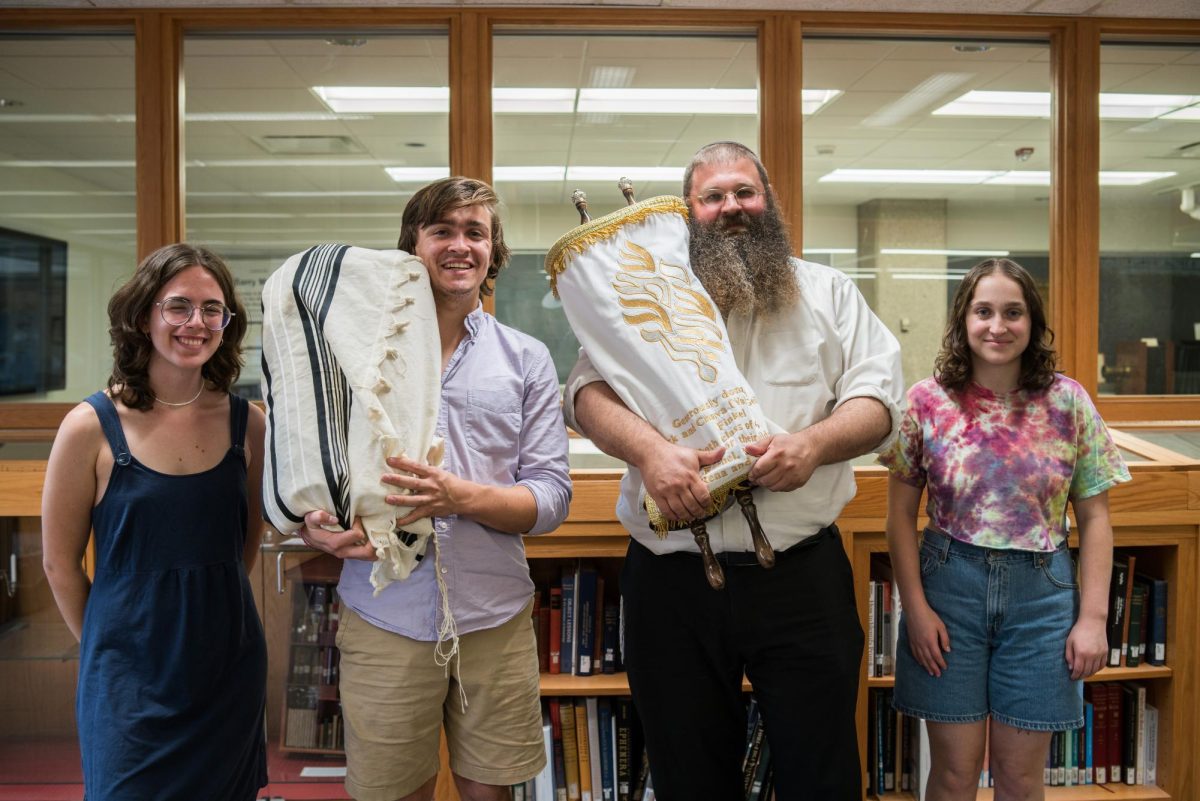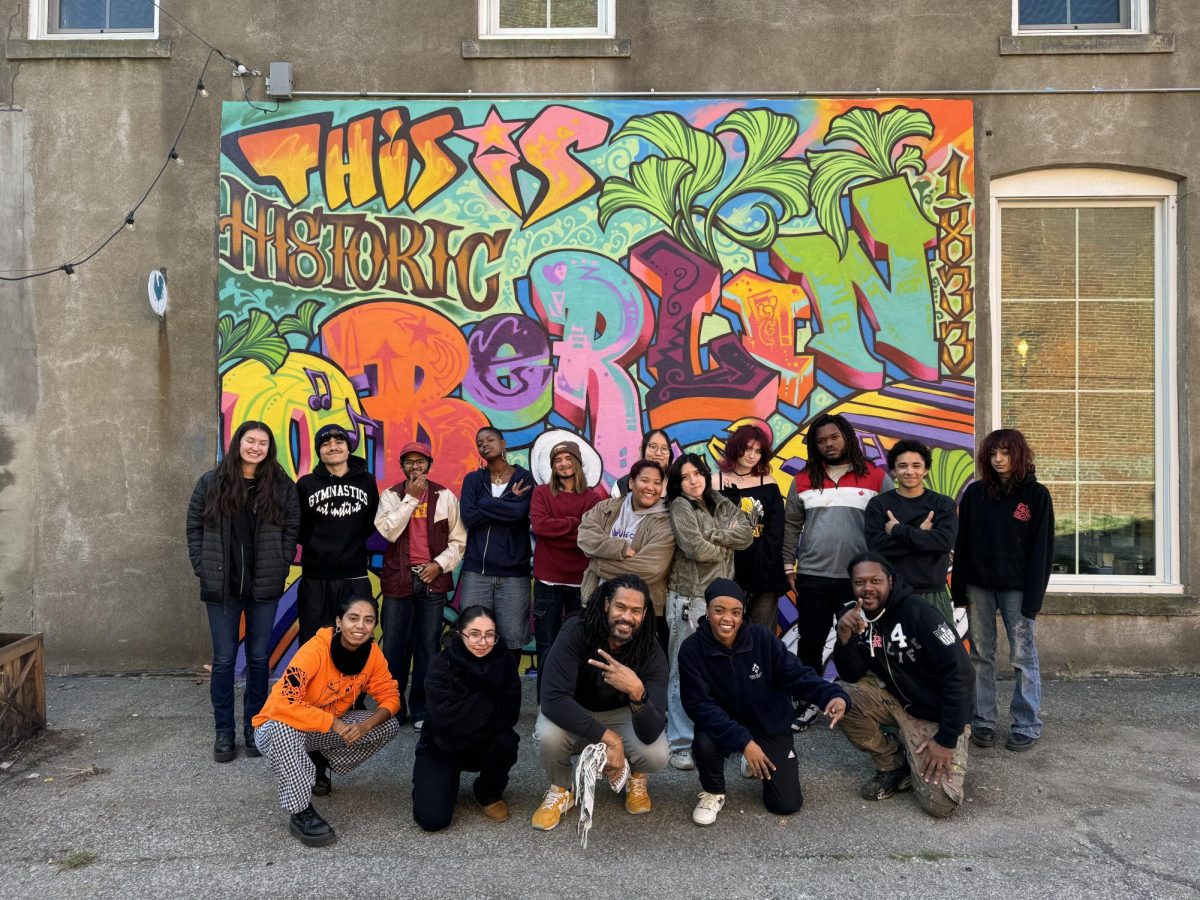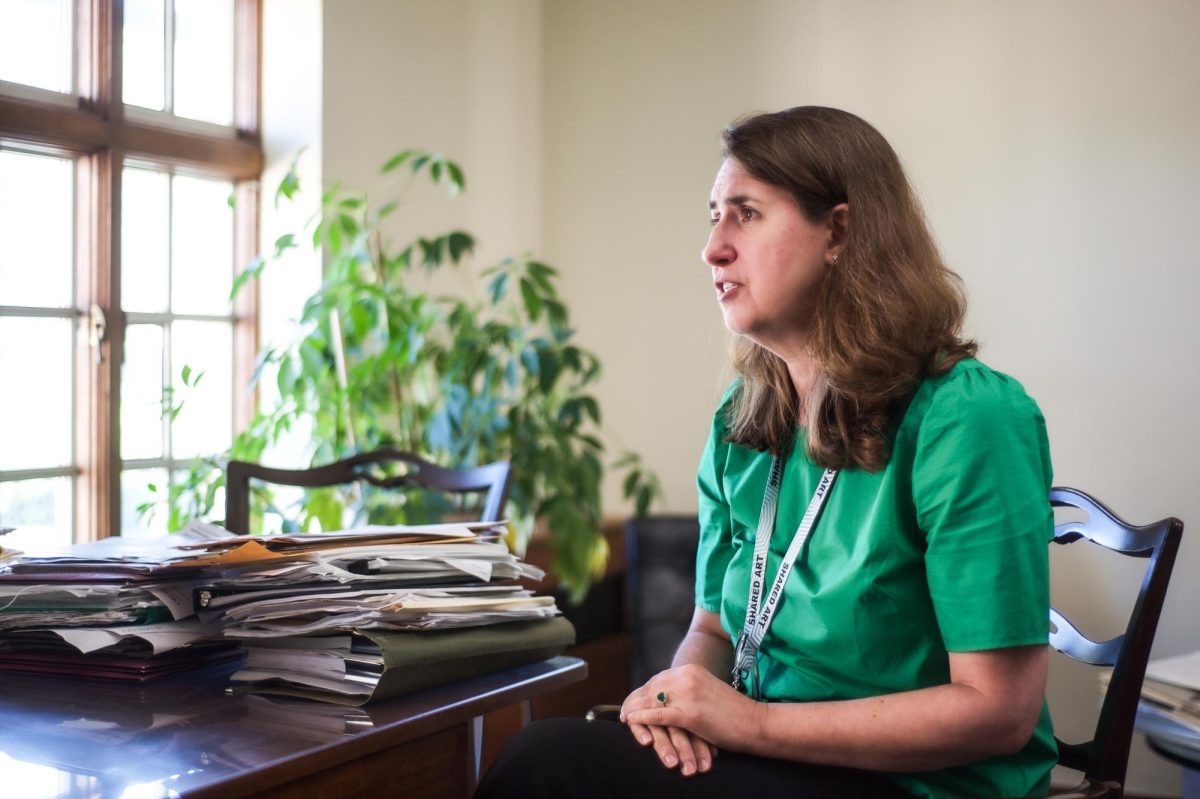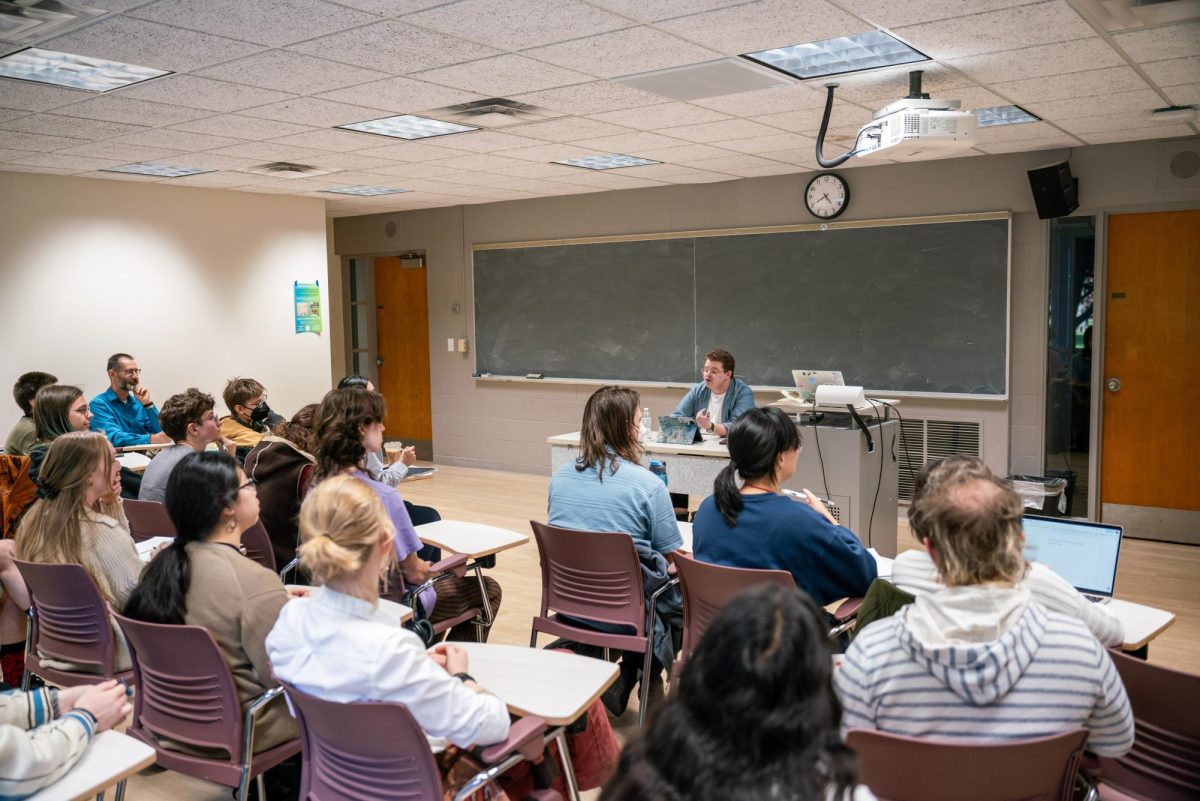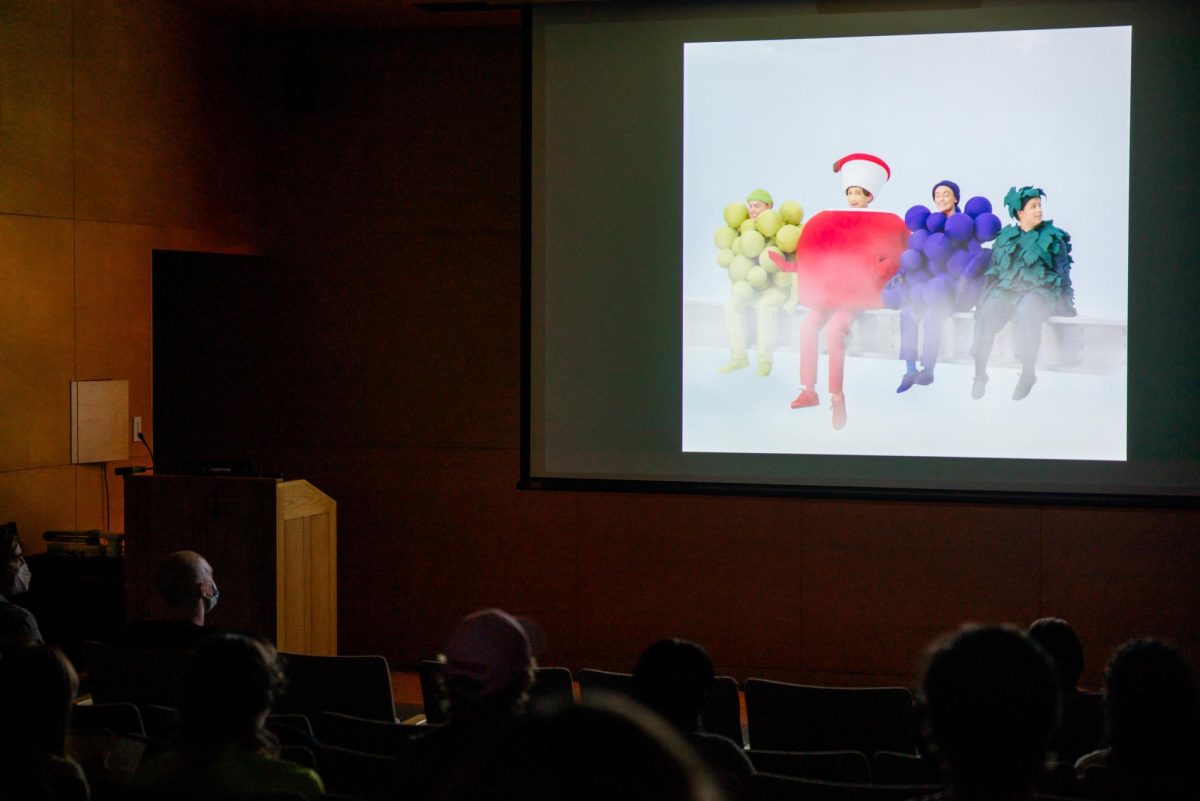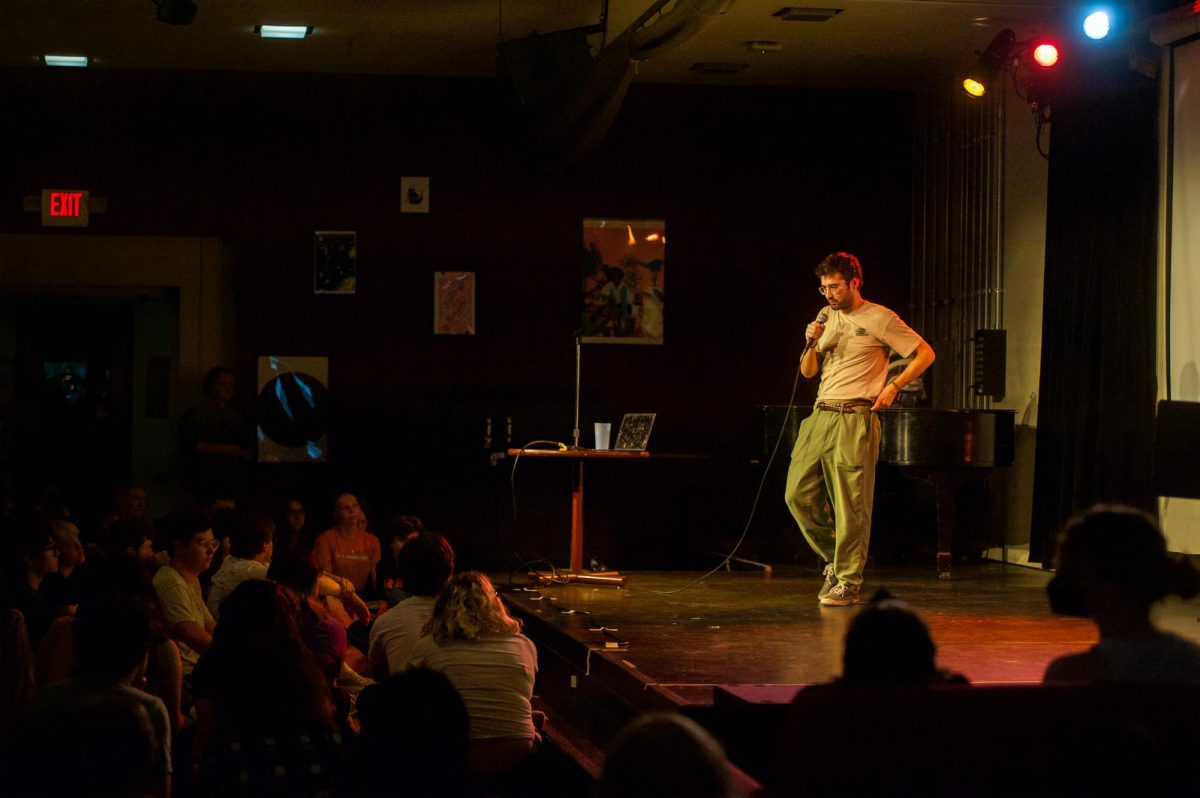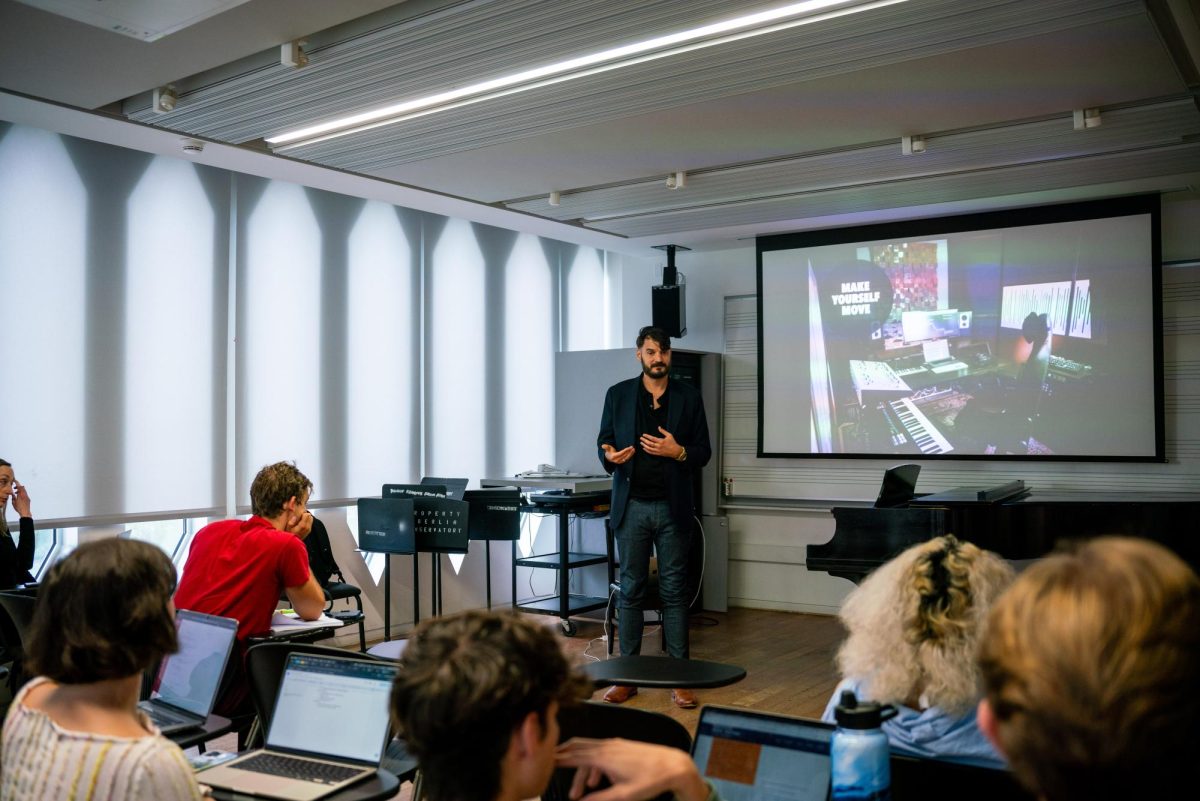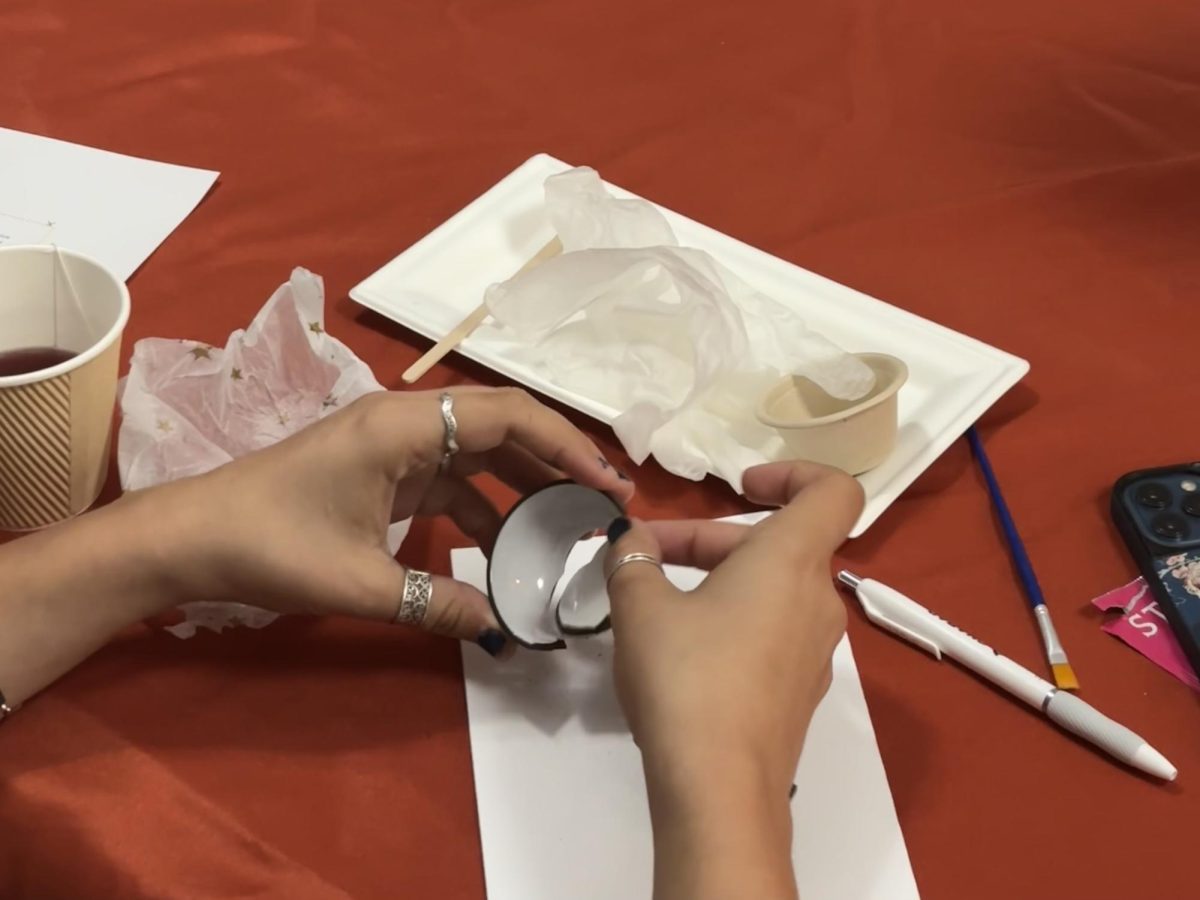This Sunday, Chabad at Oberlin will gather for Simchat Torah, a holiday which celebrates the completion of the annual read-through of the five books of the Torah and launches the next reading cycle, when the first portion of the first book is read anew.
“The whole high holiday season is ramping up into this at the end — like, ‘We did it, and now we’re here!’” Conservatory fifth-year and Chabad Student Leadership Board member Jason McCauley said. “There’s this electric feeling about Simchat Torah that I really, really like. Simchat Torah to me is just this wonderful exaltation of joy.”
In the Ashkenazi tradition, a congregation’s Torah scrolls are removed from their ark and paraded around the synagogue seven times, and all are invited to join in festive song and dance. Children run around eating candy that seems to shower from the sky.
“One would think that the holiday would be celebrated by study of Torah, but it’s not,” Director of Chabad at Oberlin Rabbi Shlomo Elkan said. “It’s celebrated by dancing, and anybody can dance. … It shows that Torah is meant to be accessible to everybody at whatever level they’re at — it’s meant to be accessible to every single Jewish person.”
This year’s Simchat Torah with Chabad at Oberlin will be unlike any that came before. The celebration will feature a guest of honor, one that hasn’t emerged from Oberlin’s Special Collections on the fourth floor of Mary Church Terrell Main Library for nearly 40 years: a Torah scroll of North African origin, written in the 14th century. University of Virginia Religious Studies Professor Greg Schmidt Goering placed the scroll in historical context.
“Besides the [Dead Sea Scrolls], the oldest Hebrew manuscripts we have are from the 10th and 11th centuries,” Goering wrote in a 2004 correspondence to Ed Vermue, special collections and preservation librarian of Oberlin College Libraries. “Thus, the Torah scroll that Oberlin possesses is really only about 400 years younger than the principle manuscripts that serve as the basis for modern study of the Hebrew Bible.”
The scroll was donated to the College in 1912 by Rev. William Barton, who acquired it on a trip to Palestine in 1902, and — based on existing archives — probably didn’t grasp the sheer antiquity of the manuscript. The scroll was presumed to be a “commonplace 19th-century artifact” with no particular historical significance until its appraisal in 1984 by expert Jewish scribe Tuvia Mechaber, whose assessment was later corroborated by experts at the Jewish Theological Seminary. Mechaber identified the scroll as “redacted in the thirteen hundreds in Africa in one of the communities of Morocco,” then brought to Spain and later expelled with the Spanish Inquisition.
“From there it wandered along with the Spanish exiles to the Balkans or Turkey or Palestine, and the hand of Providence brought the scroll to where it is at present,” Mechaber wrote.
Mechaber’s investigation of the scroll owes itself to the curiosity and entrepreneurial spirit of Roberta Milston, OC ’86, a Religion student who brought the Torah home with her to New York and entrusted it to Mechaber for restoration.
Then-Director of Libraries William Moffett, who expressed in a 1985 staff memo that he had not been sufficiently consulted during the process of greenlighting the transportation and restoration of the ancient text, wrote to Mechaber requesting insight into his conclusions about the scroll’s origins. The scribe politely declined.
“I am not prepared to mention the particulars (lit: reveal the secrets) of the vocation in which my expertise lies,” Mechaber wrote back to Moffett.
However, Mechaber had pointed earlier to several unique features of the manuscript that indicated where and by whom it was redacted, including the Sephardic practice of writing on the exterior side of the leather — a rare material for Torah scrolls — and supralineal text.
“What sets this Torah apart from all others executed in recent centuries, according to the experts who have seen it, is its inclusion of supralineal words, corrections in the text penned above the lines,” an article published in a 1985 issue of the Oberlin Alumni Magazine reads. “Such practice was acceptable in the 14th century, but is not acceptable today under Jewish traditional law.”
Mechaber’s duty in restoring the Torah was not just to preserve it by patching wormholes and repairing worn stitches but also to make it kosher for public reading, which meant re-tracing faded letters and occasionally correcting mistakes made by the original scribe by scraping off the top layer of leather and penning in a new word. According to contemporary Jewish law, the wrongful deletion of even a single letter disqualifies a Torah from use.
“The scrolls are subject to an entire corpus of laws and traditions regarding the formation of the letters, which are believed to have an independent existence, a sacredness, and a power of their own,” the label for the Torah scroll reads.
Associate Professor of Jewish Studies and Religion Shari Rabin recently brought students in her Introduction to Jewish Studies class to view the ancient Torah. Students examined the scroll in the context of a broader discussion about the Cairo Genizah, the largest known trove of sacred Jewish manuscripts, ranging from writings of Maimonides to erroneous marriage certificates, all of which contained the name of God and therefore couldn’t simply be thrown out but instead required ceremonial burial. The Genizah served as a place for documents to await their eventual entombment — a sort of morgue.
“I think what the Genizah speaks to is this real reverence for textuality in general Hebrew language, and the name of God in particular,” Rabin said. “They’re seen as having such import that when they can no longer be used, they have to be treated with proper respect.”
After restoration of the scroll was completed, Oberlin College Libraries staff hoped that it would be “made available to Oberlin’s Jewish community for selected religious services,” as written in the 1985 Oberlin Alumni Magazine article. However, according to Vermue, Sunday’s Simchat Torah celebration will mark the first time the Torah has been used ritually perhaps since its acquisition by the College in 1912.
“I’m pretty pleased about it,” Vermue said, regarding the Torah’s imminent role in holiday festivities. “That’s exciting, that our special collections are not just the dead bones of the past — biblically speaking — but they’re vital, living things that still have this performative, ritualistic dimension that allows them to be used.”
Vermue was careful to note that library staff will simply loan the Torah to Chabad at Oberlin, not host the event themselves, which could potentially compromise the Libraries’ status as a “secular, egalitarian institution.”
The delicacy of the 14th-century Torah scroll determined the venue for this year’s Simchat Torah celebration. Since it cannot leave Mudd Center, the 700-year-old scroll will lead a procession downstairs from Special Collections to the basement-level Moffett Auditorium, joined by its two-year-old counterpart: a scroll commissioned for Chabad at Oberlin in 2021 and paid for by donations from Mark and Chava Finkel, OC ’76. Once in Moffett, the two scrolls will be used in festive song, prayer, and dance.
“Judaism isn’t something that’s meant to be behind the glass case,” Elkan said. “It’s meant to be lived and breathed and engaged with, including our holy texts. It’s not a relic of the past — it’s very much ancient wisdom informing modern times. So, I think the message of taking it out of its case in an archive, quite literally, and engaging with it on our terms, is particularly poignant.”
The Torah scroll will be chaperoned by Vermue himself, who will oversee its proper handling and ensure it has a good time.
“There’s an inherent risk involved in all teaching that we do,” Vermue said. “We take as much care as we can, but you don’t want to be protective to the point where your items can’t achieve their purpose.”
Elkan can’t be certain that the old Torah is kosher for public reading — after all, the last time it was inspected by a scribe was in 1985, and letters may have cracked with disuse. However, it’s customary to dance with every Torah scroll on Simchat Torah. Even the non-kosher scrolls are removed from the ark to mingle with members of the congregation.
“In terms of Hasidic learning, the Torah is the will and wisdom of Hashem — of God,” McCauley said. “And that’s a very nonphysical thing. But then also, when it’s being brought down into a physical form, it’s an object imbued with something spiritual, a literal piece of God. That’s what we are — a physical thing being imbued with a literal piece of God.”


